A fastener or fastening is a piece of hardware that mechanically links or attaches two or more items together. In general, fasteners are used to produce nonpermanent joints, i.e., joints that can be removed or disassembled without causing damage to the components joining them. Steel fasteners are often composed of stainless steel, carbon steel, or alloy steel.
Un sujetador o cierre es una pieza de hardware que une o une mecánicamente dos o más elementos. En general, los sujetadores se utilizan para producir uniones no permanentes, es decir, uniones que se pueden quitar o desmontar sin causar daños a los componentes que las unen. Los sujetadores de acero suelen estar compuestos de acero inoxidable, acero al carbono o acero aleado.
Un perno es un tipo de sujetador roscado que tiene una rosca macho exterior que requiere una rosca hembra, como una tuerca. Los tornillos y pernos son extremadamente similares.
Los pernos son instrumentos que se utilizan para asegurar y fijar las caras de los conjuntos mediante una tuerca. Están roscados e incluyen una tuerca a juego. El objetivo de los pernos es unir orificios alineados sin rosca introduciéndolos a través de los orificios y asegurándolos con la tuerca.
Los pernos estructurales se fabrican de acuerdo con las normas ASTM A563 y A194 y se utilizan con tuercas hexagonales para unir miembros de acero estructural. Se clasifican según su rango de tamaño, carga de prueba, resistencia mínima a la fluencia y a la tracción y carga de prueba. Los pernos de alta resistencia se clasifican como pernos estructurales debido a su excelente resistencia a la tracción y capacidad para establecer conexiones de unión fuertes y apretadas. Pueden soportar un par mayor, lo cual es crucial para las estructuras de acero.
Los pernos estructurales SAE Grado 9, a menudo conocidos como tornillos de cabeza hexagonal de grado 9, tienen la mayor resistencia a la tracción de cualquier perno estructural a 180,000 PSI. Se utilizan en aplicaciones que exigen pernos de alta resistencia, como maquinaria de fabricación y topadoras. Además, los pernos estructurales de grado 9 están fabricados con cromato de zinc amarillo, lo que los hace resistentes a la corrosión.
Un perno consta principalmente de los siguientes componentes: eje del perno, cabeza del perno, dispositivo de tuerca y componente de arandela.
 |  | 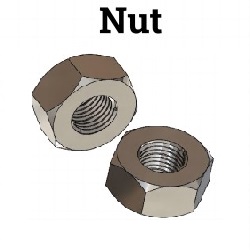 | 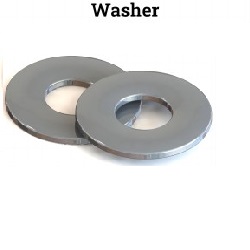 |
| Eje del perno | Cabeza del perno | Dispositivo de tuerca | Componente de la lavadora |
Bolt Shaft
The shaft is a cylinder that supports the shear stresses exerted on the bolt and prevents the pieces from moving radially. The bolt shaft consists of two segments:
The shank (or body) of a bolt is the unthreaded section beneath the head. The length is measured from the head to the beginning of the thread transition. When the shank is inserted into a bolt hole, it provides a precise and smooth contact. This part distributes stress more evenly than the threaded portion. Consequently, the shank must be extended until it surpasses the interface of the fastened materials.
The probability of bolt loosening increases if the attached parts produce or are subjected to vibration. If a bolt lacks a shank (i.e., if the bolt shaft consists solely of threading), the vibration may drive the connected pieces apart.
The thread is the continuous helical ridge on the bolt shaft's outside. This piece fits the nut and allows the bolt to be inserted or extracted from the components. The bolt thread joins with the nut's internal threads to form a fastened connection. All bolts must have a threaded portion, yet the majority of shafts are only partially threaded.
Bolt Head
The head of the bolt is responsible for carrying the axial stresses that hold the materials being secured together. A wrench or driver imparts adequate torque to the bolt head in order to tighten or loosen it. Numerous profiles and varieties of bolt heads exist, including:
Hex bolt heads have a six-sided hexagonal head that can be grasped by a variety of tools (e.g., wrenches).
Nut Device
The female component of a bolted joint with a threaded hole is the nut. To keep numerous components together, it produces clamping force and prevents axial movement. Combining two forces secures the components. The axial force that compresses the fastened pieces is exerted by the nut. This axial force generates friction between the bolt and nut threads, preventing the bolt and nut from unscrewing. If the parts are exposed to extended and continuous vibration and impact, mechanical locking devices (e.g., lock washers, jam nuts, and split pins) and thread-locking fluids are utilized.
Washer Component
The washer is a thin, flat plate with a hole in its middle. Typically, it is positioned between the bolt head and the nut. Its principal purpose is to distribute the load of the threaded fastener over a greater surface area. Thus, the deformation of materials that are fastened is prevented. Washers constructed from softer materials such as plastic, rubber, and urethane can effectively dampen vibration and prevent threads from becoming loose. There are particular varieties of washers that prevent liquids from entering the bolt joint; these types contribute to the formation of a watertight seal.
Types of Bolts
There are many different types of bolts, each having different characteristics that make them suitable for use across a wide range of applications. The principal types of bolts commonly used include: Anchor Bolts, Blind Bolts, Carriage Bolts, Double End Bolts, Eye Bolts, Flange Bolts, Hex Bolts, Machine Bolts and Machine Screws, Penta-Head Bolts, Round Head Bolts, Shoulder Bolts, Socket Head Bolts, Square Head Bolts, T-Head Bolts, U-Bolts.
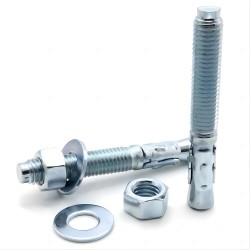 |  | 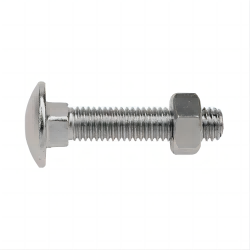 |
| Anchor Bolts | Blind Bolts | Carriage Bolts |
 | 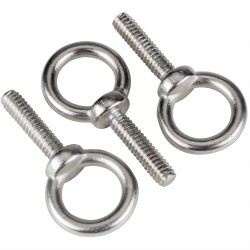 | 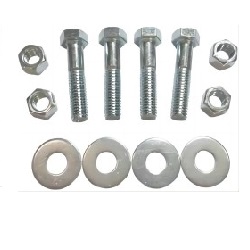 |
| Double End Bolts | Eye Bolts | Flange Bolts |
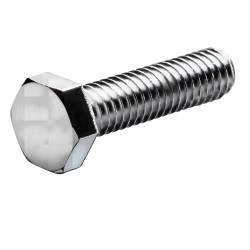 |  | 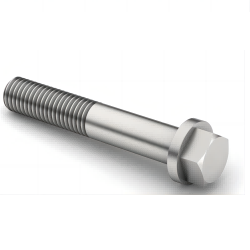 |
| Hex Bolts | Machine Bolts and Machine Screws | Penta-Head Bolts |
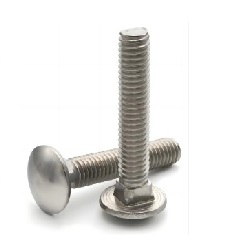 | 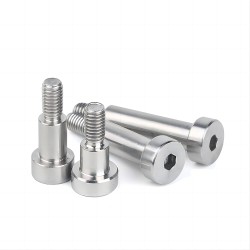 | 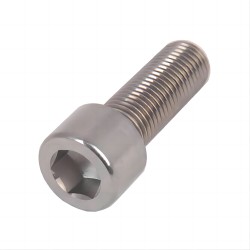 |
| Round Head Bolts | Shoulder Bolts | Socket Head Bolts |
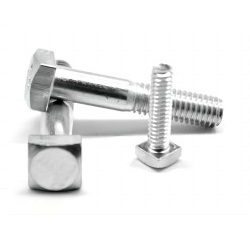 | 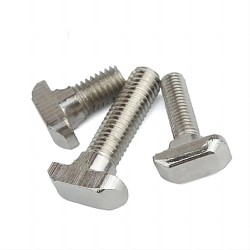 | 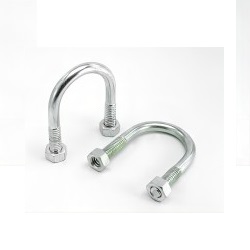 |
| Square Head Bolts | T-Head Bolts | U-Bolts |
Contacto: Sino Special Metal Co., Ltd.
Teléfono móvil: 86-19527792928
Correo Electrónico: sales@ssmsteel.com
Whatsapp:86-19527792928
Dirección: Mudu town Jinfeng South Road, Wuzhong District, Suzhou City, Jiangsu Province
We chat
